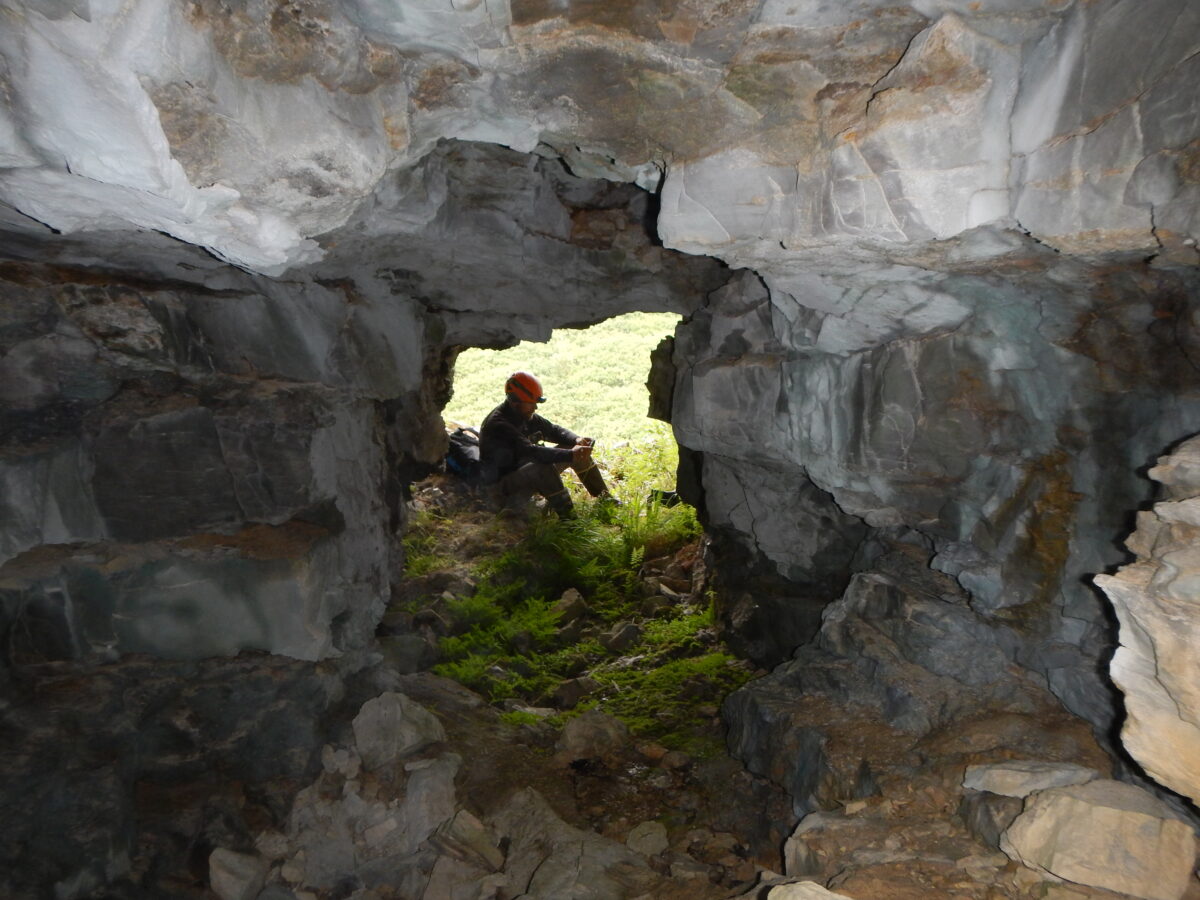A paper published in November 2018 analyzes the oldest ancient artifact found in the Arctic: a 9,000-year-old child’s tooth.
The tooth was discovered, and forgotten, way back in 1949 at Trail Creek Caves, right outside the community of Deering. Jeff Rasic, an archaeologist working with the National Parks Service, tells KNOM what makes its rediscovery so special.
“There are hardly any human remains known from all across the Arctic… The next oldest human remains come from Greenland, and they’re about 4,000 years old. So, this more than doubles the age of the oldest human remains from the Arctic. There are other ancient human remains from central Alaska, interior Alaska, but this is the oldest in the Arctic.”
The tooth’s age is really only part of the story, though, according to Rasic. Through advanced DNA analysis, scientists were able to uncover a wealth of knowledge.
“They’re looking at the entire genome of this ancient individual… that’s a feat, because the DNA degrades over time, and it takes some luck and some great skill to tease the DNA information from an old specimen like this, especially a small one.”
DNA analysis of the tiny specimen revealed that the tooth belonged to a member of a population called the Ancient Beringians.
“There’s one other individual of that type known, and it’s from central Alaska, about 400 miles away — and a little bit older, about 11,000 years old. So what that tells us is that this population of people was pretty widespread across Alaska, or Eastern Beringia, at the time… Alaska was connected to Asia with a land bridge, the Bering Land Bridge. So this population of people existed in the area at that time and then persisted after the land bridge was severed, after sea levels rose and severed the land bridge. These Ancient Beringians persisted to at least 9,000 years ago, the age of the Trail Creek Specimen… and it seems to be a population that maintained its own identity and integrity. There wasn’t a lot of gene flow from other populations coming in.”
The Trail Creek Caves tooth is highlighted in a paper that looks at 14 other ancient specimens from across North and South America. The tooth provides context for a bigger archaeological picture.
“People resided in Beringia, in Alaska for some time, and then some groups travelled further south and went on to colonize all of North and South America. So this population in Alaska is an offshoot of this major branch in the family tree of all Native Americans. And the next big branching event occurred in the mid continent south of the continental glaciers in North America. So this person from Trail Creek Caves is a relative of all other Native Americans. The broad strokes of that family tree are really being sketched out in front of our eyes.”

A lab at the University of Alaska–Fairbanks was able to examine the chemical signatures of the tooth, shedding light on its ancient owner’s diet, as well as their movement around the region.
“They had a very strong emphasis on terrestrial food sources. And at that time, caribou were really the main option people had… other animals, bison and mammoth, were extinct by 9,000 years ago… the cave is also loaded with caribou bone; that’s another good indication that that was a prominent animal on the landscape at that time.”
But examination of the tooth revealed no signs of fish or marine mammals being a part of the Beringian’s diet.
“…which was a little bit of a surprise. Archaeologists have debated when that subsistence focus came about. There’s other evidence from other places in Alaska that people were eating salmon, at least, very early on. But it’s unknown when people started to focus on marine mammals. In this case, we have one data point that says this person 9,000 years ago was eating no marine mammals. They weren’t hunting seals or walrus, even though the site is not that far from the coast.”
Rasic points out how the Beringian’s caribou-heavy diet at that time bridges the ancient and the present. Additionally, the cave site where the tooth was found is no secret to people in the community of Deering.
“…People in Deering know about these caves, and even use them a little bit. They’re not big, roomy caves that you’d spend a lot of time in; they’re just little hollows where we think even 9 and 10,000 years ago all that people did there was duck out of the rain — they weren’t raising their families there… they were probably passing by, and in the course of a hunt, they’d pop in there if the weather was bad. It’s really a pretty sporadic use, and that characterizes recent use of the caves, too. People in Deering know about these spots and maybe use them in similar ways… these spots on the landscape have been used in more or less the same way for 10,000 years.”

Jeff Rasic is the team leader for the Natural and Cultural Resource Program for Gates of the Arctic National Park. He has done archeological research across northern Alaska.
The information he shared with KNOM, along with the contributions of several other scientists, was published in a paper in the Journal of Science in November of 2018, titled “Early Human Dispersals Within the Americas.”
Further research underway on the tooth reveals that the individual was not a migrant, but rather lived in a fairly small area on the northern part of the Seward Peninsula. Rasic says more development on the individual’s movement and their diet will be published in another scientific article in the near future.
Image at top: A view from the interior of Trail Creek Cave 2, the site where the ancient Beringian tooth was originally found by Danish archaeologists in 1949. Photo: Andy Tremayne, National Park Service, used with permission.





